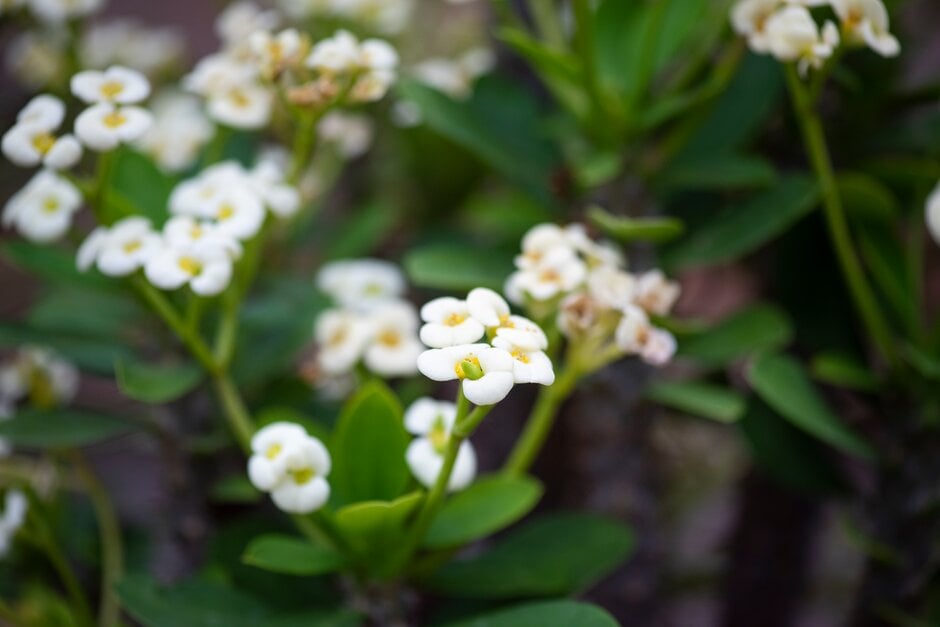Not the plant you're looking for? Search over 300,000 plants
ShrubsConservatory GreenhouseHouseplants
Size
Ultimate height
0.5–1 metresTime to ultimate height
10–20 yearsUltimate spread
0.1–0.5 metresGrowing conditions
Chalk
Loam
Sand
Moisture
Well–drainedpH
Acid, Alkaline, NeutralColour & scent
| Stem | Flower | Foliage | Fruit | |
| Spring | Green | |||
|---|---|---|---|---|
| Summer | White Yellow | Green | ||
| Autumn | Green | |||
| Winter | Green |
Position
- Full sun
Aspect
East–facing or South–facing
Exposure
ShelteredDrought resistance
Yes Hardiness
H1BBotanical details
- Family
- Euphorbiaceae
- Native to GB / Ireland
- No
- Foliage
- Evergreen
- Habit
- Bushy
- Potentially harmful
- Humans/Pets: IRRITANT to skin/eye, harmful if eaten. Wear gloves and other protective equipment when handling. For further information and contact numbers regarding pets, see the HTA guide to potentially harmful plants
- Genus
Euphorbia can be annuals, perennials, shrubs or succulents, with milky sap and small flowers held within cupped, often colourful bracts
- Name status
Unresolved
How to grow
Cultivation
Grow under glass in a mix of three parts peat-free, loam-based potting compost to one part grit in full light. Water sparingly when in growth applying a low nitrogen liquid fertiliser monthly. Keep dry in winter. See Euphorbia for further advice
Propagation
Propagate by seed sown as soon as ripe at 15 to 20 °C or by cuttings
Suggested planting locations and garden types
- Sub-tropical
- Patio and container plants
- Houseplants
- Low Maintenance
Pruning
Pests
Generally pest-free
Diseases
May be susceptible to grey moulds
Get involved
The Royal Horticultural Society is the UK’s leading gardening charity. We aim to enrich everyone’s life through plants, and make the UK a greener and more beautiful place.
